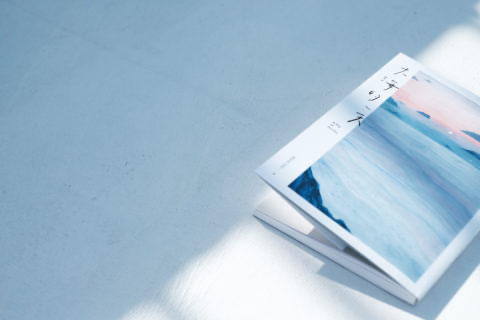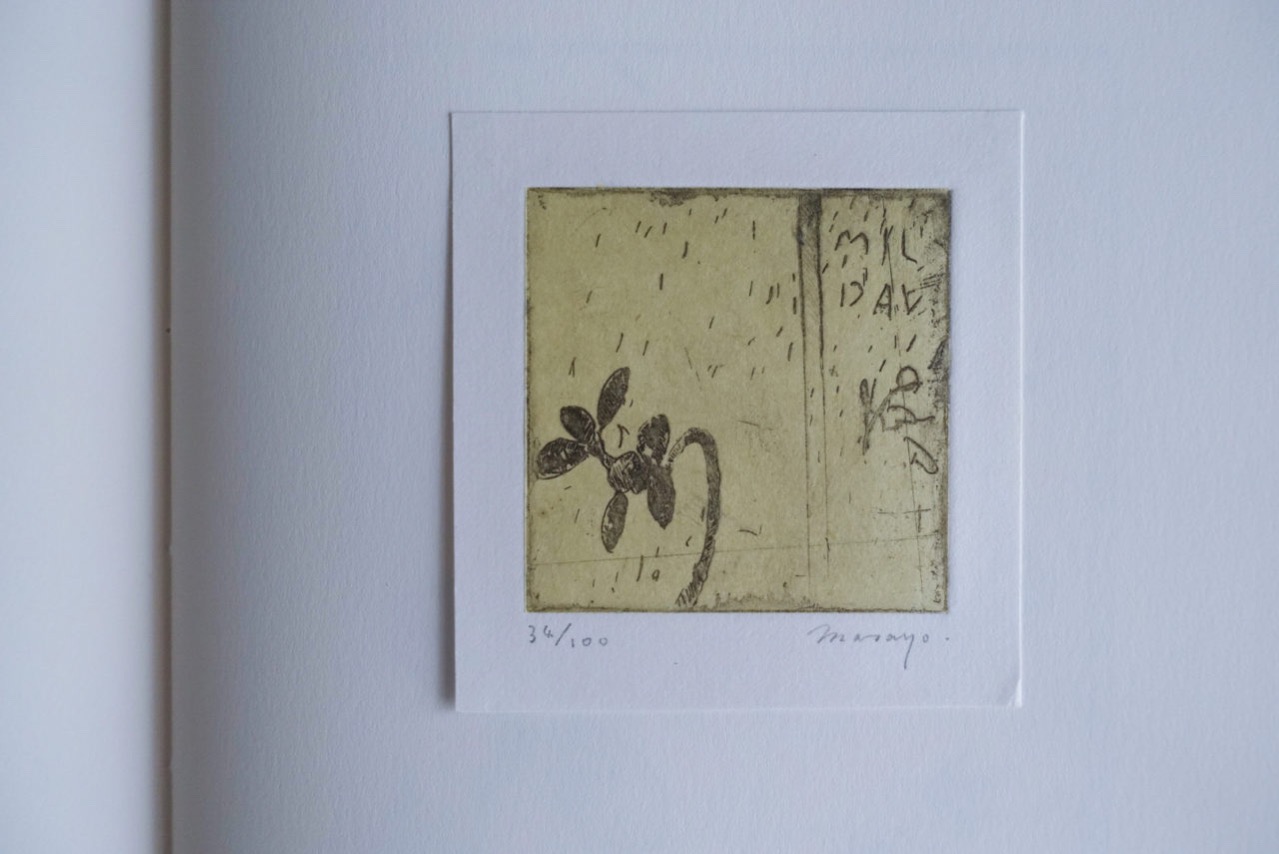
翻開書的封面,風聲傳來,彷彿窗外樹影婆娑,樹葉淅淅沙沙,再翻,向左翻的一頁,向右翻的一頁,猶如打開兩扇窗戶,詩的風景,徐徐在眼前展開。這是由山元伸子編輯、設計,並且親手逐本裝幀的詩集《窗之韻》。
翻開書的封面,風聲傳來,彷彿窗外樹影婆娑,樹葉淅淅沙沙,再翻,向左翻的一頁,向右翻的一頁,猶如打開兩扇窗戶,詩的風景,徐徐在眼前展開。這是由山元伸子編輯、設計,並且親手逐本裝幀的詩集《窗之韻》。
山元伸子原本是一位編輯,後來才從事書籍設計的工作。她成立的個人獨立出版社Hioriyomi社,出版的書籍以詩集為主,每本詩集收錄的詩數目不多,大概只有十首,多是一些已沒有版權的詩。山元伸子定了主題,將它們集結起來。書籍設計也是詩的表達,像她早前出版的《白色的詩集》,選來的詩,均是與白色相關的,印刷每首詩的紙張的質感截然不同,詩內傳達的白,彷彿就撫摸得到了。
這本《窗之韻》於2016年時出版,除了十首詩以外,她還邀請了銅版書家森雅代(Masayo Mori)為每首詩創作銅版畫。我特別喜歡原民喜的《車窗》那一組。詩的譯意大概是:
滿開的桃花裡
小學生兩三人
早上的路微溫
可惜火車太匆匆
森雅代為這首短詩配了三幀圖,山元伸子將它們分別放在三頁裡,小巧的圖片如同火車的車窗,一頁翻過一頁,猶如行走中火車,窗外風景留不住,讀著心裡不猶得生起惋惜。
讀日文詩時,偶爾會感到若有所失。日語的發音不如中文多變,才五十音,唸起來時便少了一點趣味,讀音拼湊起時也難有變化。然而,在讀來平淡的音調裡,卻奇妙地延展出廣闊的風景。我還在學習欣賞日文詩,而山元伸子選擇的詩,常為我打開一篇窗,窺探到詩無垠的、明媚的風光。
Opening the book, I could hear the wind blowing outside of the window; I had a feeling that I could almost see the tree leaves dancing. I turned the pages as if opening windows that show me the landscape of poetry. This was my encounter with The Melody of Windows, a poetry collection edited, designed and hand-bound by Nobuko Yamamoto.
Yamamoto was an editor before working as a book designer. Her independent publishing house Hioriyomi focuses on poetry collections. Each of the poetry collection usually includes around 10 poems, most of which are no longer bound by copyright. Yamamoto would put them together based on a certain theme that can also be reflected in the book design. For instance, The White Poetry is a collection of poems related to the white color, each printed on a different type of paper, so that the different “whiteness” written in the poems can as well be felt by the fingers.
The Melody of Windows, published in 2016, is a collection of 10 poems that were printed alongside with copper plate etching images designed by the copper plate etching artist Masayo Mori. My favorite was Train Windows by Tamiki Hara, which can be loosely translated as:
Under the blooming cherry blossom
Are a couple of primary school children.
The road is slightly warm in the morning,
But the train leaves in haste.
The three images Mori designed for this particular poem are placed on three pages; when turning pages, they appear like a moving train that sadly reminded me of the temporality of sceneries behind the train windows.
Japanese poetry sometimes makes me feel bereft. Unlike Chinese, the Japanese language only consists of 50 sounds, it is comparatively dull when reading aloud and is rather difficult to create many different combinations of sound. However, behind the somewhat monotone poetry is in fact a magically wide horizon. I am still a beginner in appreciating Japanese poetry, the poems selected by Nobuko Yamamoto often open up the window for me to have a glimpse at the vast and exquisite landscape of poetry.
